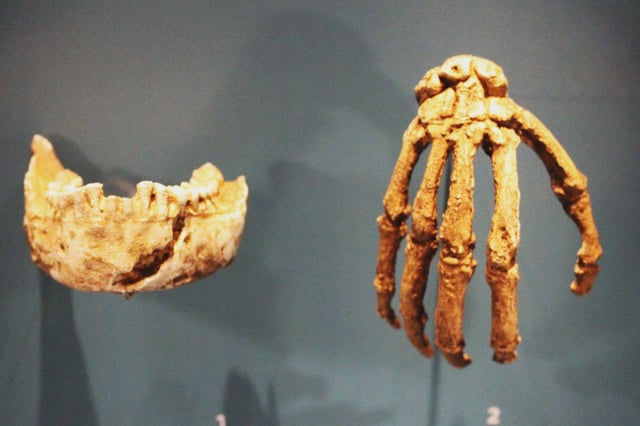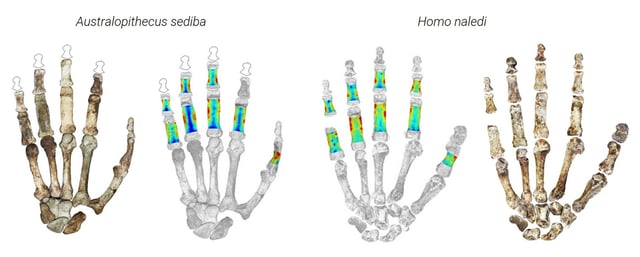Overview
- Cortical bone analysis of two fossil hand skeletons shows a mosaic of human-like and ape-like traits in Australopithecus sediba and Homo naledi.
- Australopithecus sediba exhibited human-like thumb and pinky adaptations for manipulation alongside ape-like climbing traits in other fingers.
- Homo naledi's unusual finger bone patterns suggest specialized 'crimp grips,' similar to those used by modern rock climbers, likely aiding cave navigation.
- Both species demonstrate diverse hand use, balancing climbing and dexterity, indicating hand evolution was not a straightforward progression toward modernity.
- Despite anatomical evidence of dexterity, neither species has been directly linked to stone tools, leaving questions about their tool use unresolved.

